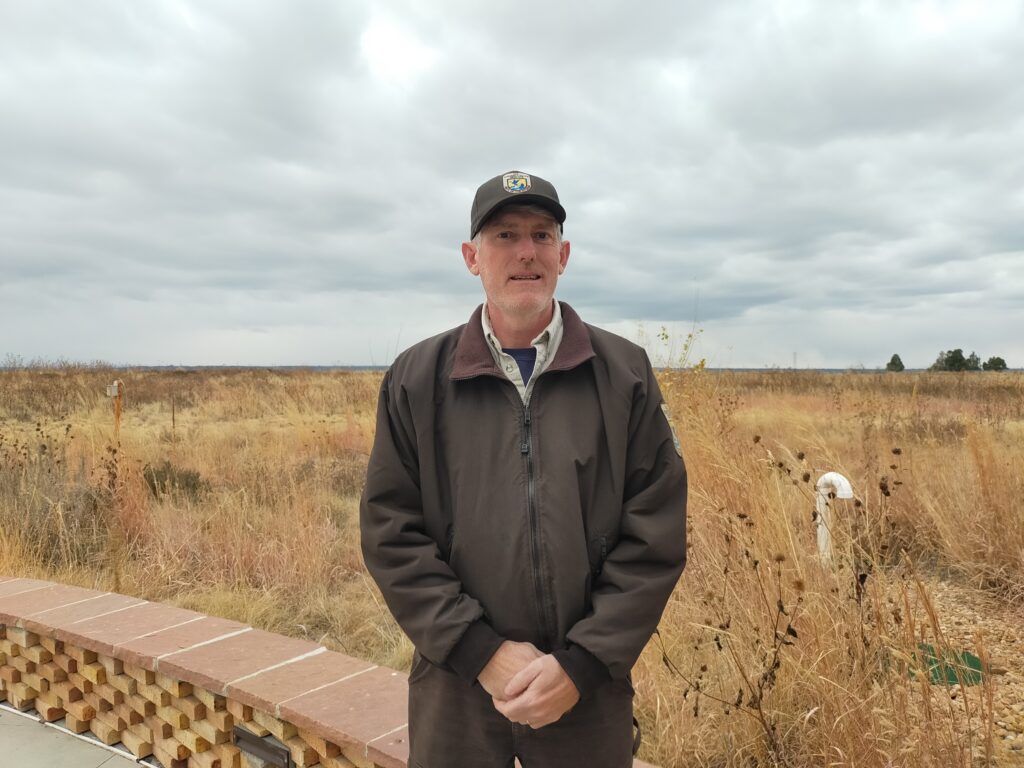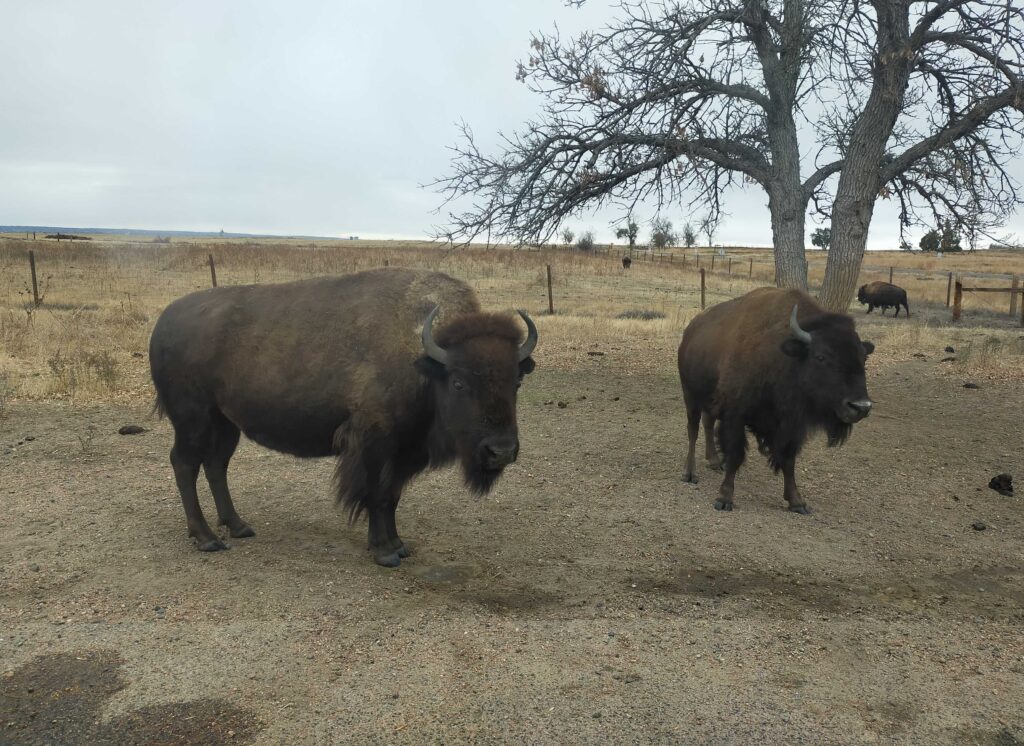
Photo by: Konrad Flæte Gundersen
By: Konrad Flæte Gundersen
______________________________________________________________________________
ROCKY MOUNTAIN ARSENAL NATIONAL WILDLIFE REFUGE – A herd of 250 bison is thriving on a wildlife refuge within metro Denver where bison play the key role in restoring former prairie that became some of the most toxic land in America.
During World War II and the Cold War, the U.S. Army produced chemical weapons here — mustard gas and sarin nerve agents. Shell Oil produced pesticides, such as DDT, which led to the near extinction of bald eagles.
Production ended in 1982 and a $2.1 billion, 23-year cleanup began.
The chemical manufacturing and waste disposal practices at the arsenal led to “extensive soil, surface water, sediment, groundwater and structures contamination, damage to trees and vegetation, and death to wildlife,” according to a Colorado Department of Public Health and Environment website posting. “Solid and liquid chemical hazardous wastes were disposed of in trenches, burn pits and pooled in open basins covering wide areas.’’
But now this heavily polluted terrain has emerged as one of the nation’s premier wildlife refuges, teeming with animals and more than 950,000 human visitors a year, according to David Lucas, a U.S. Fish and Wildlife Service biologist who has managed the refuge for a decade.

Photo by Konrad Flæte Gundersen
On a recent cloudy morning, Lucas drove across the grasslands at the refuge. Looking out his truck window, he spotted deer, bald eagles, prairie dogs and scores of the bison.
‘’This area I love, it’s beautiful,’’ he said, pointing to hillside thickly vegetated with a mix of native shrubs and grasses.
He credits the bison. “They are creating this mosaic,’’ he said.

Photo by Konrad Flæte Gundersen
Since 2010, this introduced herd has grown from around 40 bison to 250, he said. This year, 50 new bison were born, and he contends it is the most genetically diverse bison herd in the nation.
Bison rove about as they graze, covering greater distances than cattle. Weighing as much as a ton, they churn the terrain with their hooves, and when they roll on their backs they create depressions that help retain water during dry times. This behavior on the landscapes where bison evolved promotes the growth of native plant species, Lucas said.
For the federal government, he serves on a national team of experts who have been exploring the potential for restoring bison across the Great Plains and other regions where, in the 19th Century, bison widely were killed off.
“Bison restoration is entirely possible and ecologically wise,’’ he said.
But challenges loom, nationwide and on this refuge, which is located less than ten miles north of downtown Denver. Lucas said funding and staffing are insufficient.
And urban development on land around the refuge increasingly leads to flooding.
Three prairie creeks historically meandered in sinuous curves across the land, until settlers straightened the creeks and diverted natural flows to irrigate pastures. Then the Army and Shell Oil embarked on their industrial abuse of the land.
The channelization of creeks, combined with increased stormwater runoff from adjacent urban land east of the refuge, is leading to flooding and erosion. The creeks are cutting deeper into the land, creating ruts, separated from their historic flood plains where cottonwoods grew.

Photo by Konrad Flæte Gundersen
“Who is this good for?’’ Lucas said, blaming the increasingly paved over, or “impervious,” urban development in Denver and Aurora for dramatic recent erosion on the refuge.
Water flows that could been retained on the refuge instead gush away into Commerce City and Brighton on the western side in the South Platte River Valley.
Once the average volume of water flowing across the refugee in First Creek hovered around 8 cubic feet per second (cfs), Lucas said. Now the average flow has reached 1,000 cfs, with storm surges at up to 4,500 cfs, he said.
‘’The game has to change,’’ Lucas said.
He and his crew are embarking on efforts to mechanically re-designed the creeks to create curves again and to be able to carry more water. By restoring creeks to their original patterns and creating the capacity to carry more water to allow for the urban stormwater surges, he said, the refuge will benefit as water flows slow down and help to irrigate the prairie where the bison graze.
The greatest gains can be made by working in sync with natural processes, Lucas said.
“At some point we need to stop fighting,’’ he said. “Mother Nature always wins.’’


